The True 17th Century Jewel of Lahore
Many people in Lahore are unaware of the Wazir Khan Mosque, a true gem in the city’s rich architectural history. The beauty and grandeur of Lahore are incomplete without this magnificent piece of Mughal architecture. This mosque holds a significant position among Lahore’s monuments, with its stunning frescoes, vibrant colors, and intricate calligraphy. Entering the mosque feels like stepping into a world of peace, tranquility, and color, calming the mind and soul.
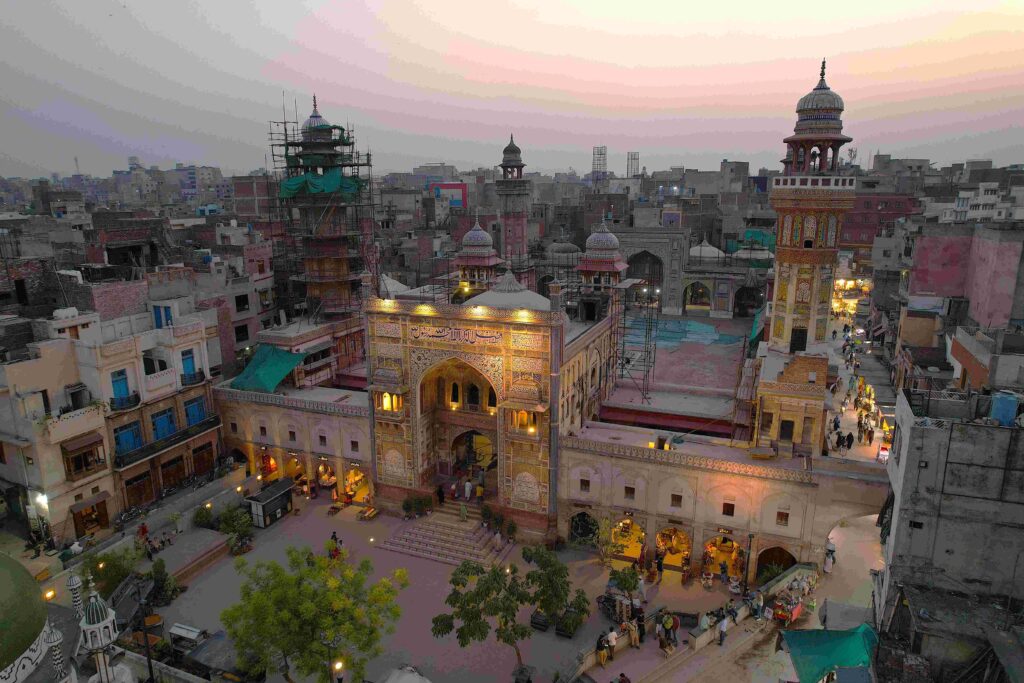
A Masterpiece of Mughal Architecture
Built under the patronage of Governor Wazir Khan, the mosque’s foundation was laid in 1634 and completed in 1641 during the reign of Mughal Emperor Shah Jahan. Shah Jahan’s era is known for architectural marvels like the Taj Mahal, Sheesh Mahal, and Shalimar Gardens. The Wazir Khan Mosque stands proudly among these masterpieces, located deep within Delhi Gate inside the Walled City of Lahore.
The Location: Shahi Guzargah (Royal Trail)
You can reach the mosque by walking along the Royal Trail (Shahi Guzargah), which the Mughals used when traveling from Delhi to Lahore Fort. As you approach Chowk Wazir Khan, the mosque emerges in all its glory. Until recently, the mosque was hidden behind encroachments that were removed in 2012 by the Walled City of Lahore Authority (WCLA), revealing its true magnificence to visitors.
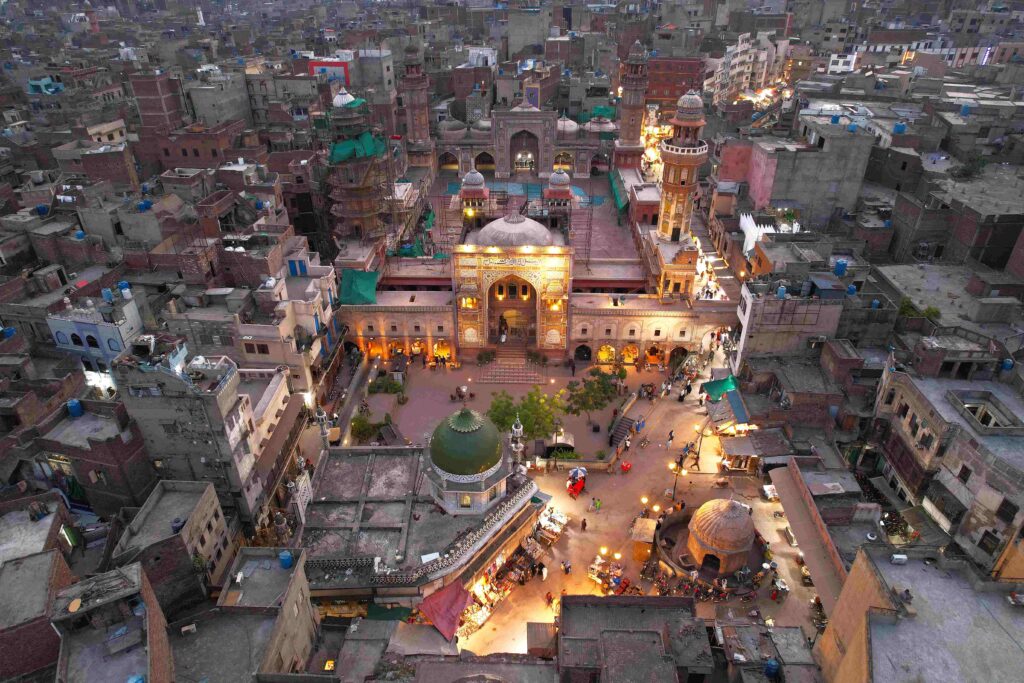
Why Wazir Khan Chose This Site
Wazir Khan chose this location because it was the central hub of Lahore at the time, connecting various parts of the city through winding streets. The site also holds spiritual significance. It houses the tomb of Sayyid Muhammad Ishaq Kazirun, a saint who lived two centuries before the mosque’s construction. This place had long been a center for religious learning, where students came to seek spiritual knowledge.
A Place of Knowledge and Learning
During the Mughal era, the mosque became a gathering place for scholars and students from across the Muslim world. Many students came to study Quran and calligraphy, residing in the small hujras (rooms) that surround the mosque. Even today, the mosque retains its aura of knowledge and learning, drawing visitors and researchers alike.
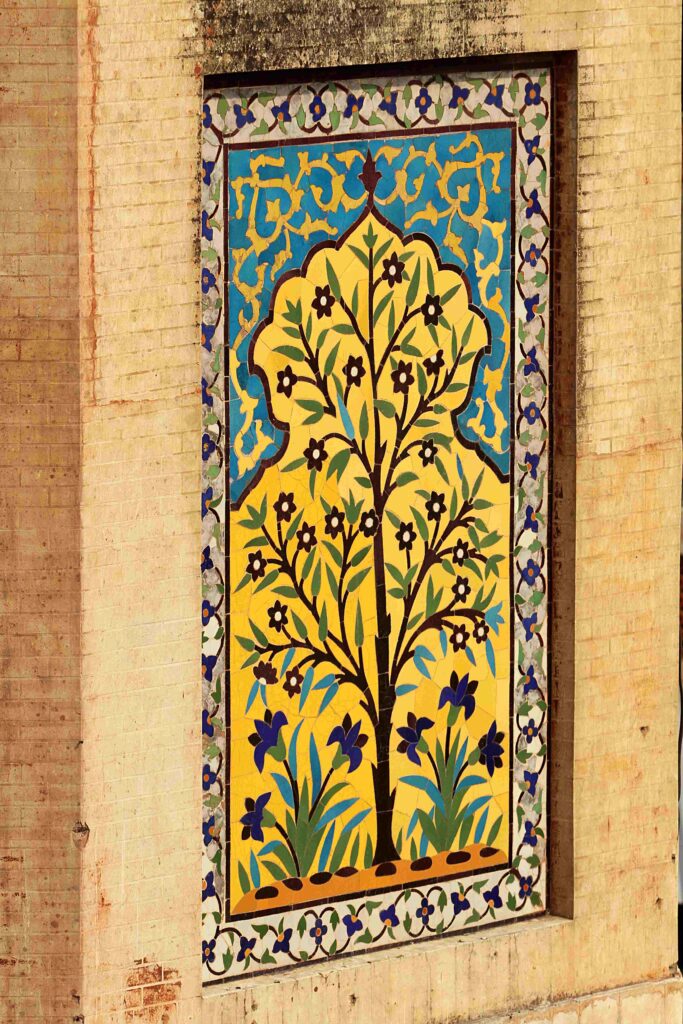
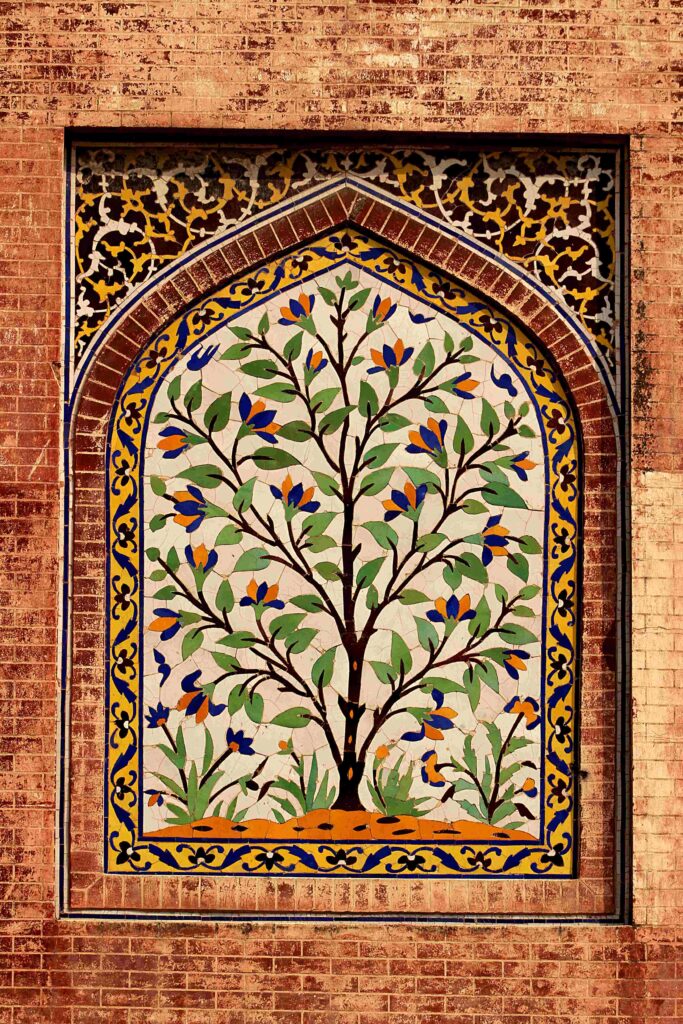
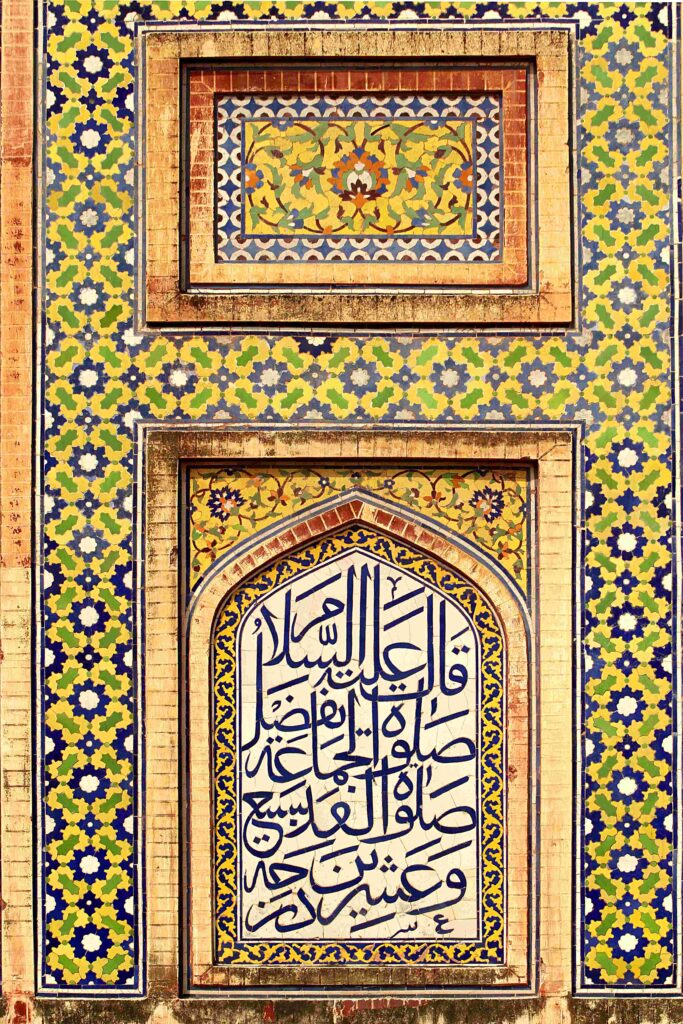
The Magnificent Entrance
The main entrance of Wazir Khan Mosque is breathtaking. The grand eastern gate stands as a monument in itself. During recent excavation and conservation efforts, the original ground level was restored, and now visitors must climb more steps to enter the mosque. The gate is flanked by minarets, each two feet in diameter, topped with small cupolas. Another gate on the northern side opens into the bazaar, and both gates have been beautifully restored by the Aga Khan Trust for Culture and WCLA.
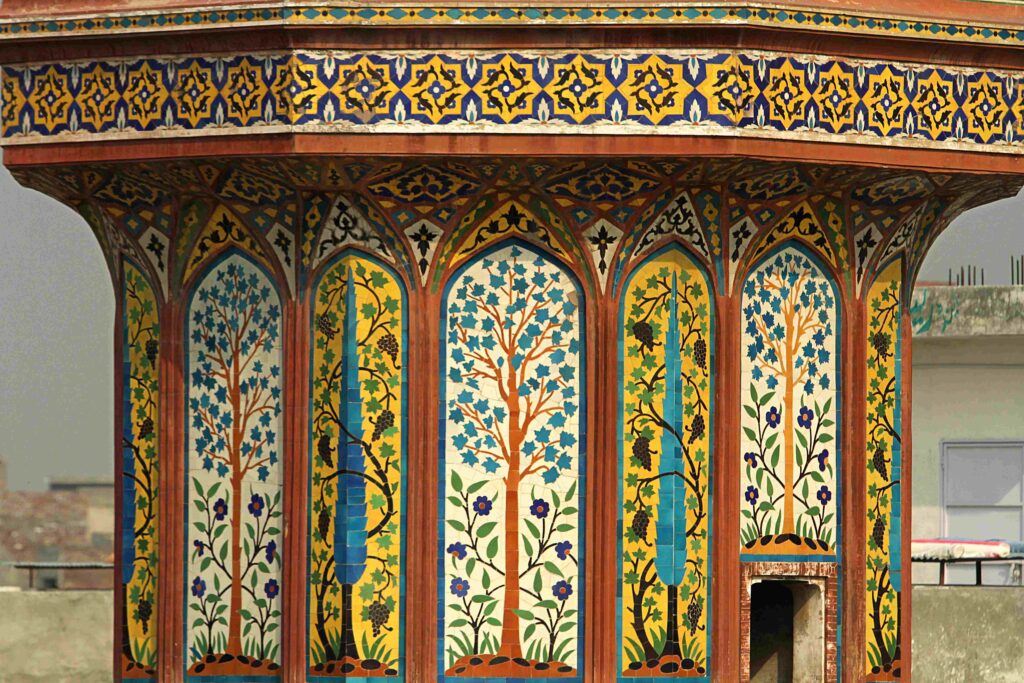
Architectural Details: A Feast for the Eyes
The arched niche at the entrance is adorned with floral motifs and is one of Lahore’s earliest examples of a muqarna, a decorative element found in imperial mosques of Iran and Spain’s Alhambra. The low domes over the prayer hall reflect Lodi dynasty architecture, blending pre-Mughal and Mughal styles.
A Courtyard of Serenity
Once inside, you’ll encounter the bazaar that leads into the mosque’s courtyard. The courtyard houses the tomb of Sayyid Muhammad Ishaq Kazirun, located nine steps below the current ground level. The courtyard itself is flanked by 32 hujras on three sides, where students once lived. The ablution area in the center of the courtyard glimmers with blue water, adding to the mosque’s tranquil atmosphere.
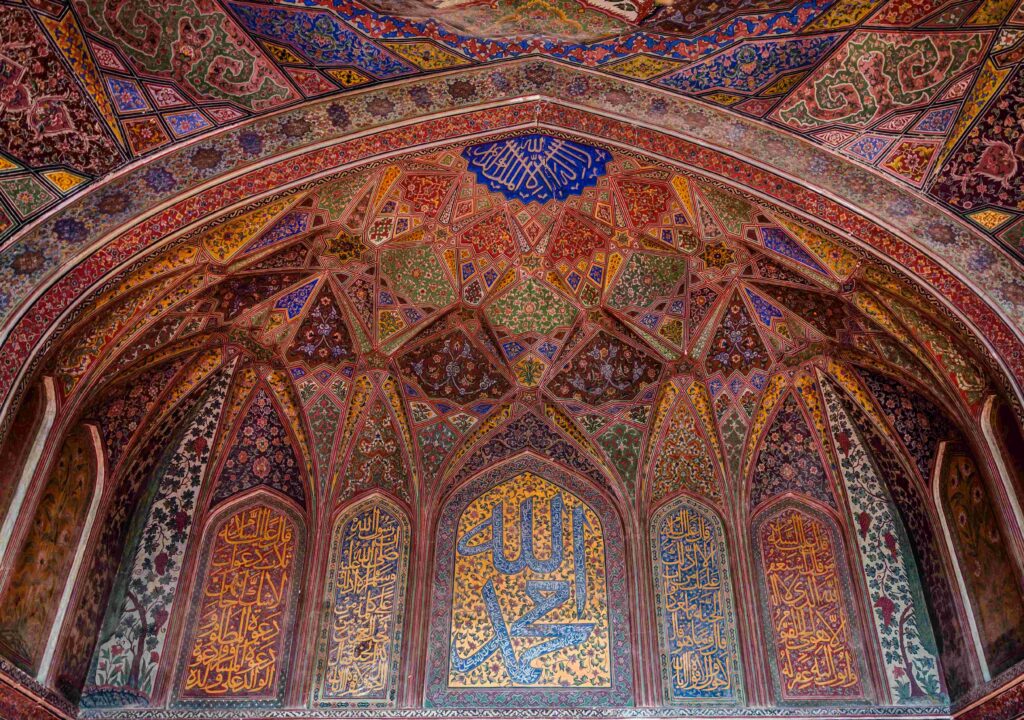
The Majestic Minarets
Four towering minarets stand at each corner of the courtyard. These were the first of their kind in Lahore, introduced by Mughal architects and offering stunning views of the Walled City. The design and positioning of the minarets set the architectural tone for later mosques, including the Badshahi Mosque, built by Aurangzeb.
A Prayer Hall Like No Other
The prayer hall of Wazir Khan Mosque is one of the most ornately decorated spaces in Lahore. Every surface is adorned with frescoes and calligraphy, blending spirituality with stunning artistry. The glazed tile mosaics, known as kashi-kari, cover the walls with rich Persian-style colors, including cobalt blue, turquoise, green, orange, and purple. These vibrant colors bring the mosque to life, making it a visual feast for visitors.
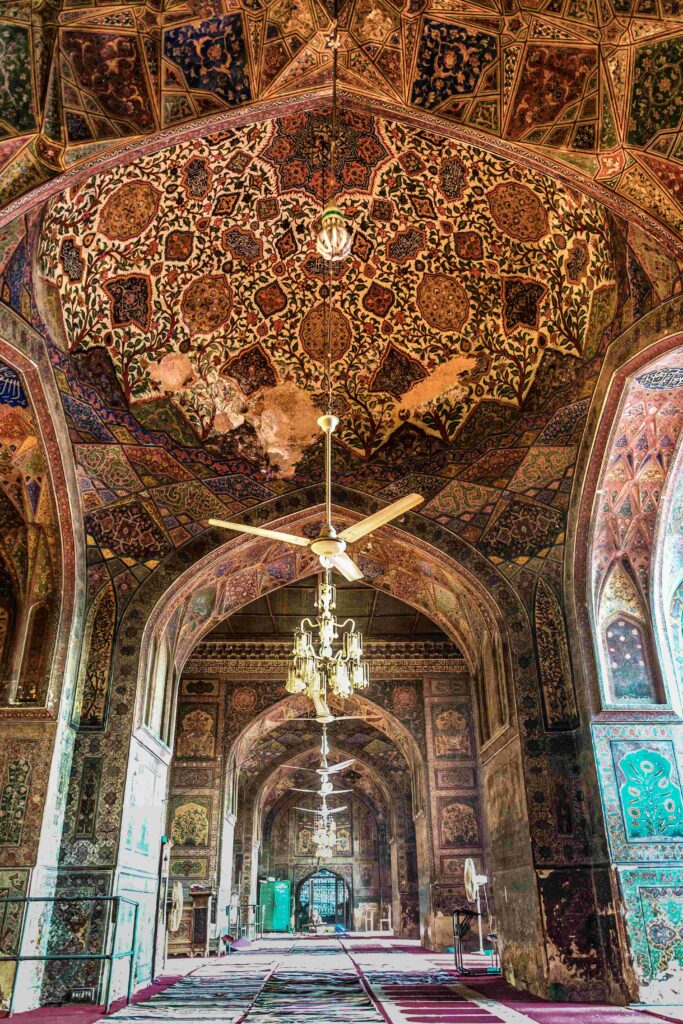
Persian Influence in Design
The mosque’s exterior is just as impressive as its interior. The façades are decorated with floral designs and Persian-inspired motifs, such as star-shaped flowers and grapes. It was the first Mughal structure to borrow these motifs from Persia. Above the entrance to the main prayer hall, you’ll find verses from Surah Al-Baqara, inscribed by the renowned calligraphist Haji Yousaf Kashmiri.
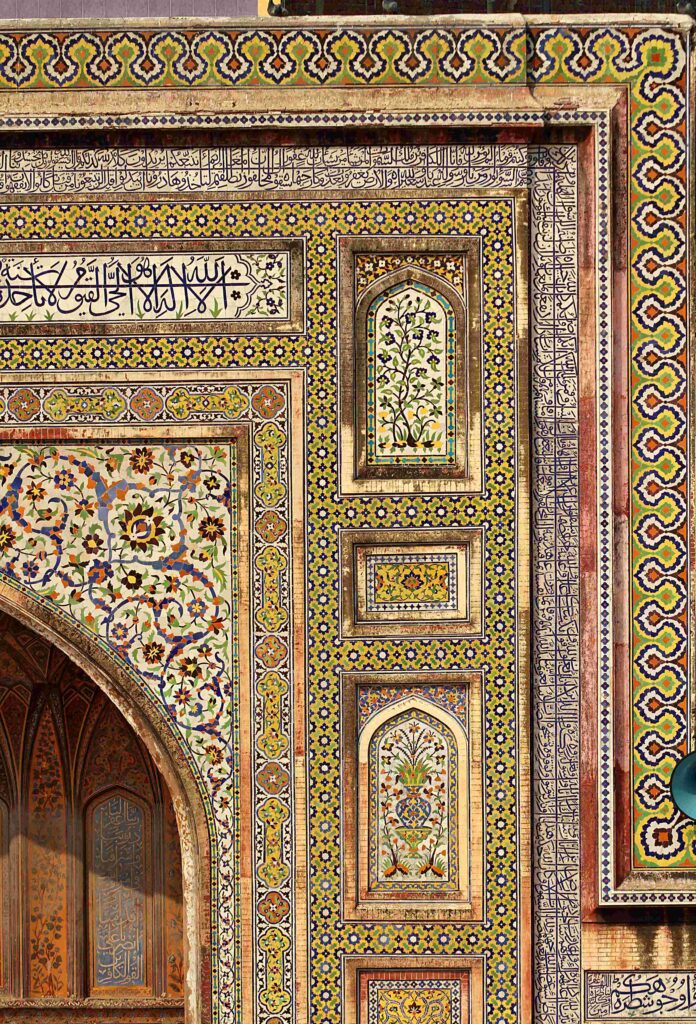
A Photographer’s Paradise
The interior walls are plastered and adorned with detailed fresco art, creating a unique visual experience for visitors. Photographers from all over the world come to capture the mosque’s beauty. The frescoes inside the domes depict the Islamic concept of Paradise, adding to the spiritual and aesthetic allure of the mosque.
A Protected Heritage Site
The Wazir Khan Mosque is listed as a Protected Heritage Monument by the Archaeology Department of Punjab. It contains some of the finest examples of Mughal-era mosaic tile work, with intricate calligraphy and geometrical patterns that showcase the artistic genius of 17th-century artisans. The floral patterns and Quranic verses create a serene and balanced atmosphere, making the mosque a place of beauty and spirituality.
Restoration Efforts
The mosque’s beauty was once hidden behind rented-out hujras that housed metal workers, damaging its grandeur. These workers were relocated, and the mosque was restored with the help of foreign experts from the Aga Khan Trust for Culture. Today, the mosque stands restored to its former glory, a testament to Lahore’s rich heritage.
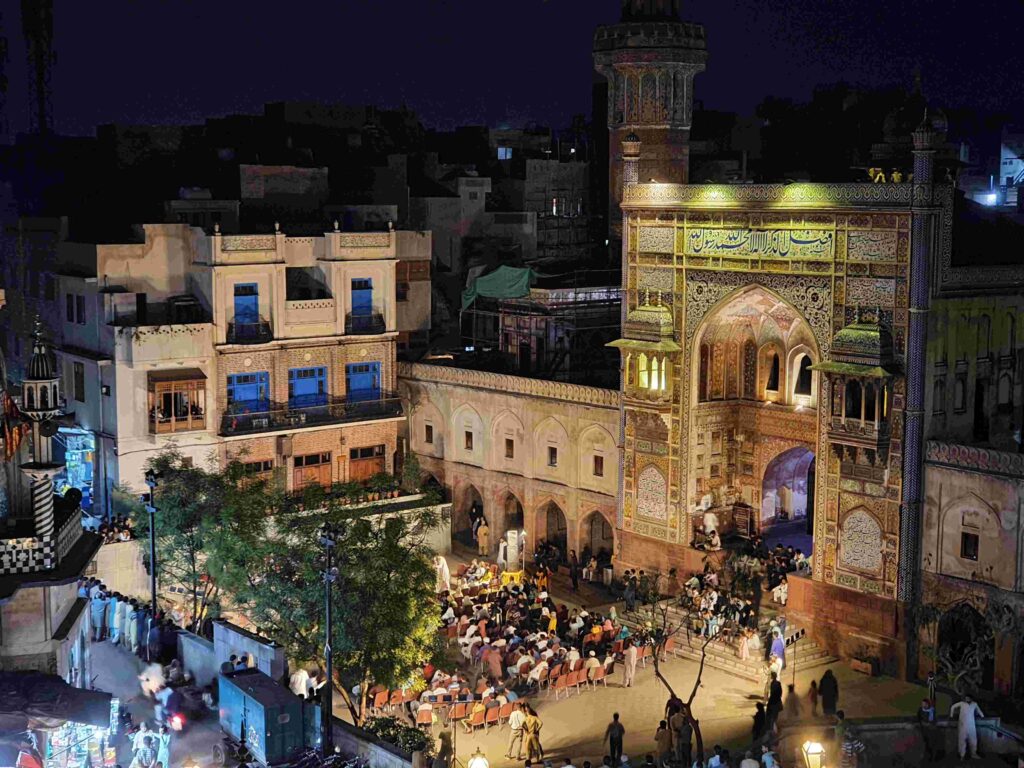
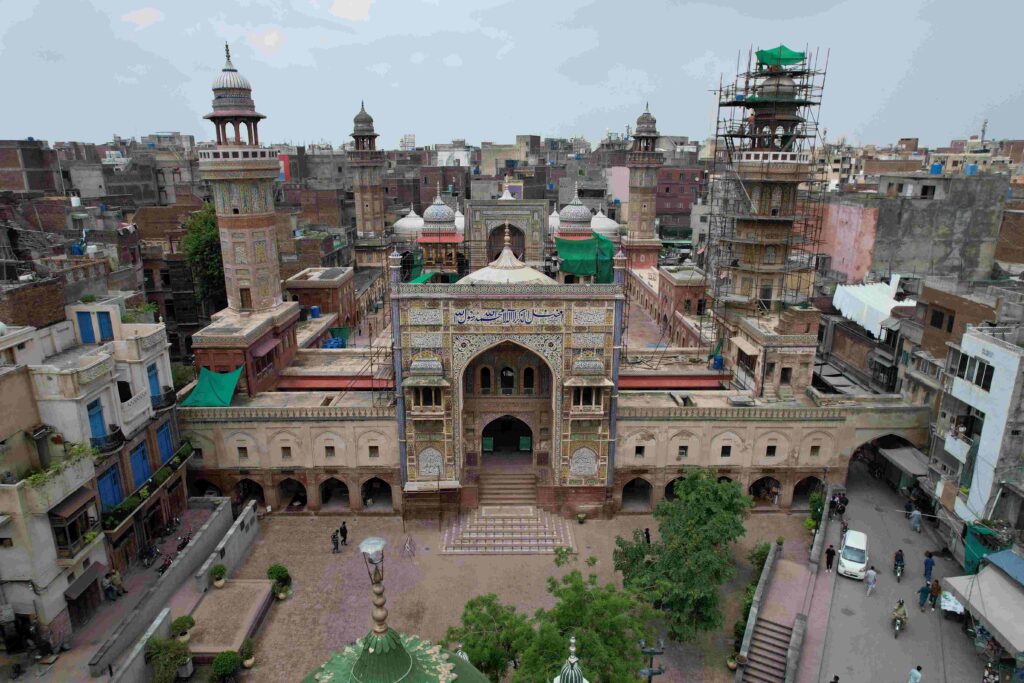
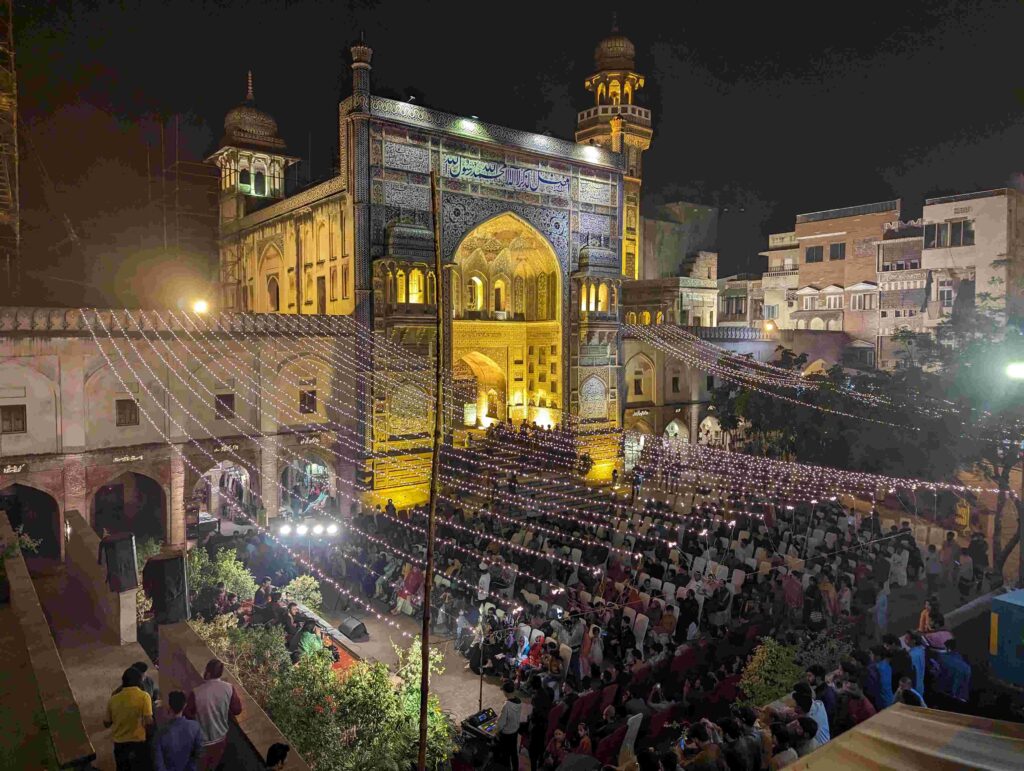
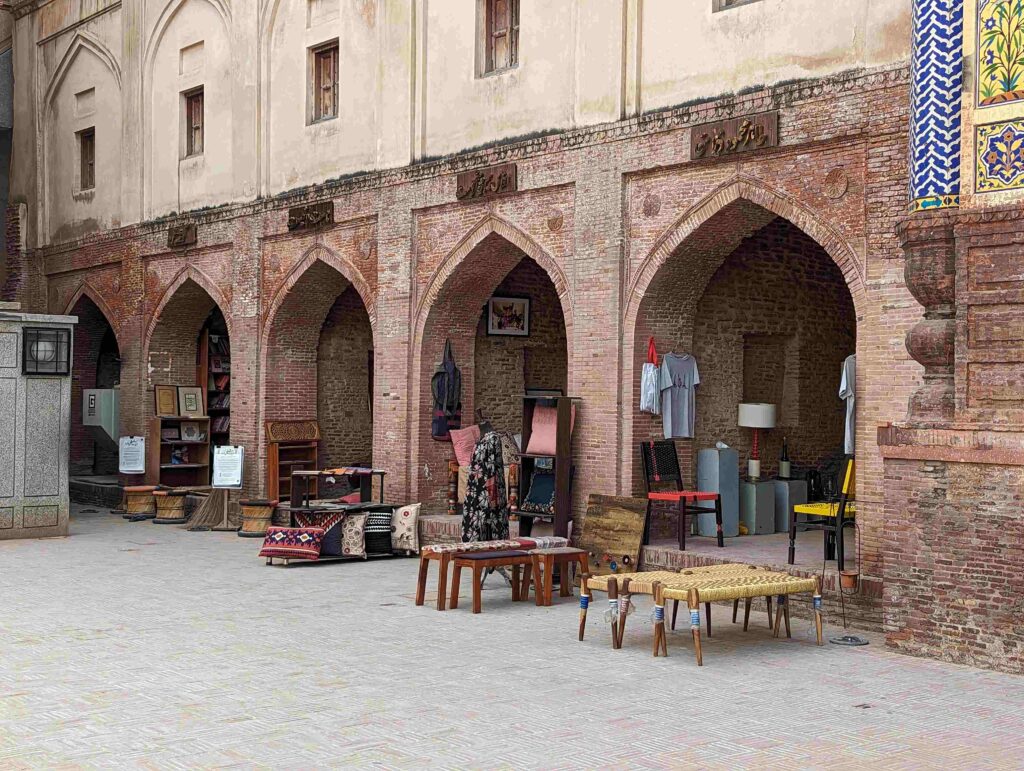
A Must-Visit Monument
Wazir Khan Mosque remains one of the most beautiful and historically significant sites in Lahore. It’s a must-visit for anyone interested in Mughal architecture, history, or simply the beauty of Islamic art. The mosque’s combination of calligraphy, color, and design makes it a timeless jewel of Lahore’s architectural heritage.
Written by Tania Qureshi
The writer can be reached on twitter.com/TaniaQureshi
